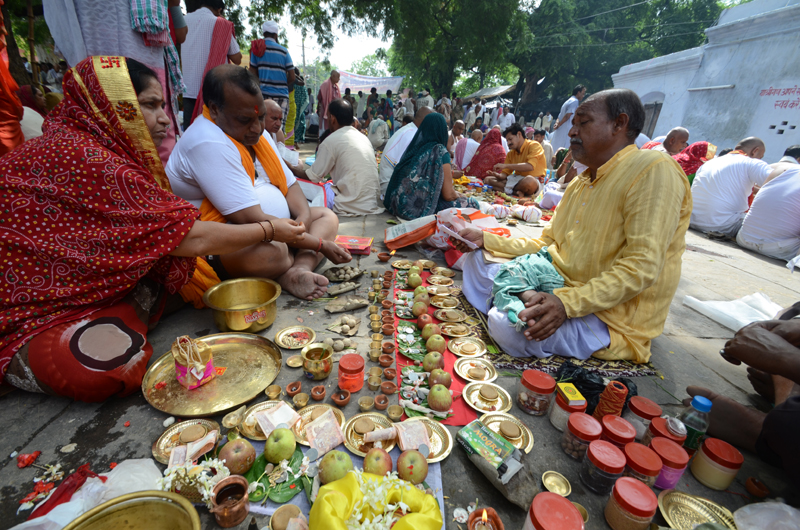


Auspicious Day for Pinddaan at Gaya
Pinddaan can be performed year-round, but it is most auspicious during the 18-day Pitripaksh Mela in Gaya, typically in September or October. This period is considered ideal for offering Shradh to departed ancestors, attracting 1 to 1.5 million pilgrims. The ritual is also significant during Amavasya in Krishna Paksh. Pinddaan is performed at sacred sites like Vishnu Temple, Akshay Vat, and the Phalgu River, with the ritual involving three key steps: Snana and Sankalpa, Pinddaan and Tarpan.
Honoring Ancestral Souls with Sacred Devotion and Reverence
Pinddaan is a sacred Hindu ritual performed to honor and offer peace to the souls of deceased ancestors. According to Hindu beliefs, the ritual helps in liberating the souls of the departed from the cycle of rebirth, ensuring their eternal peace and salvation. It is an act of devotion and respect, where offerings are made in the form of "Pind," which consists of rice balls mixed with sesame seeds, barley flour, and other sacred ingredients.
Traditionally, Pinddaan is performed in holy cities like Gaya, Varanasi and Haridwar, which are considered powerful places for spiritual cleansing. The ritual involves chanting specific mantras and prayers by a priest, who guides the devotee through the process. The offerings are usually made at the banks of sacred rivers or at designated temples, with the belief that the ritual will provide solace to the departed souls and bring blessings to the family.
Pinddaan is most commonly performed during the period of Pitripaksh, a 16-day lunar period dedicated to ancestor worship. During this time, millions of devotees travel to sacred sites to perform these rituals, fulfilling their spiritual duties and paying homage to their forefathers. The ritual is considered one of the most significant acts of reverence in Hindu tradition, strengthening the bond between the living and their ancestors.
Pinddaan Package